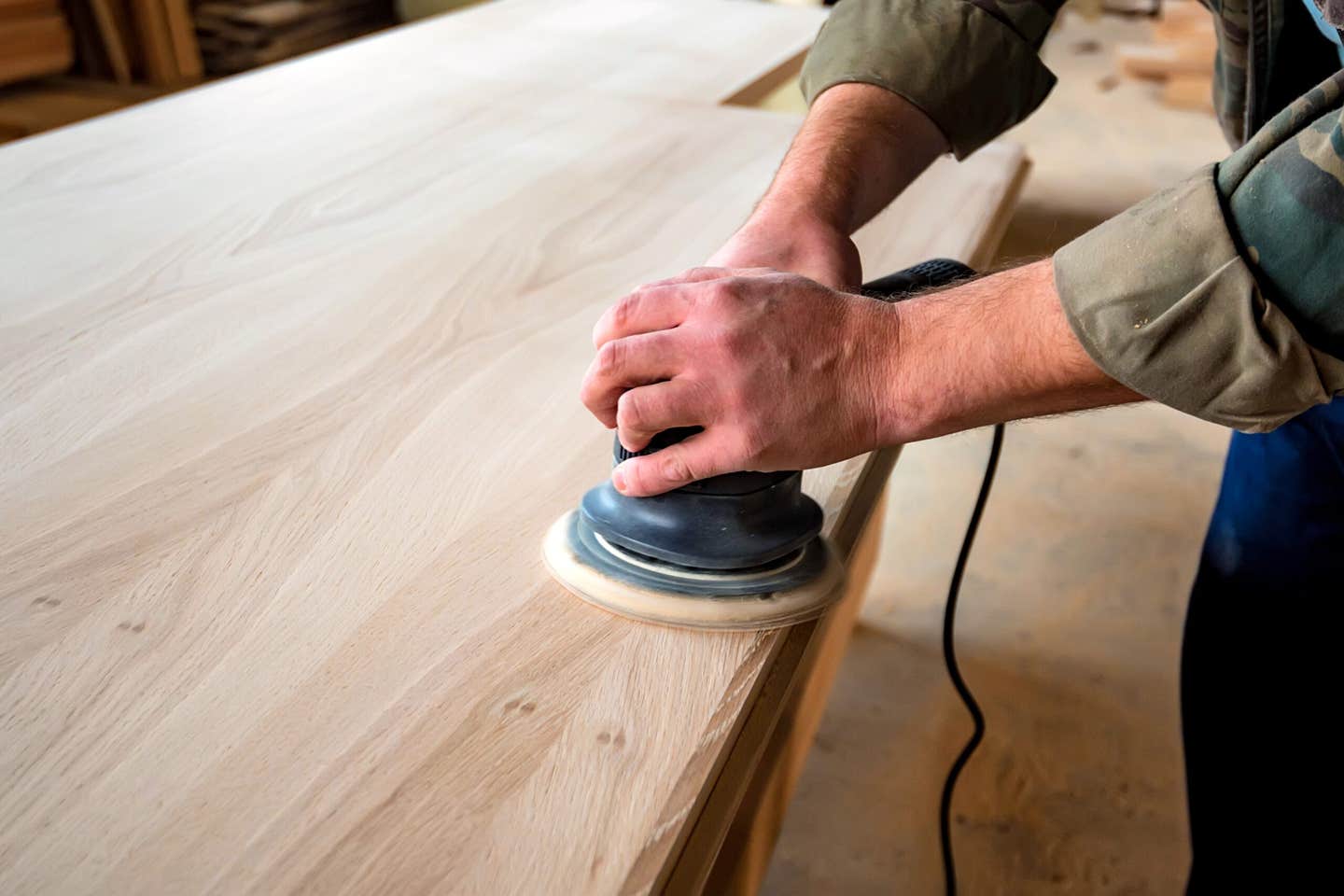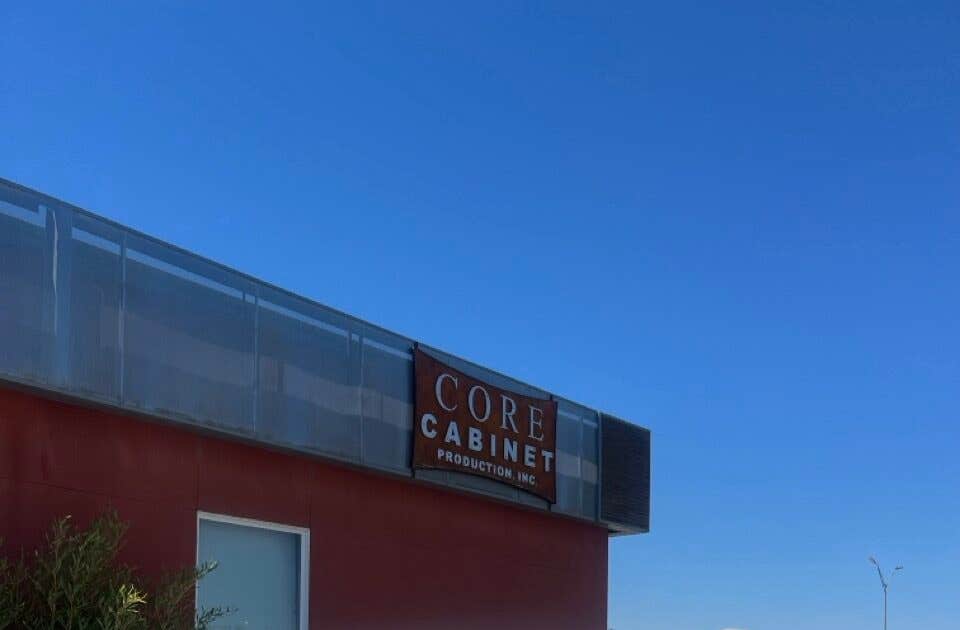Bright lights, big business
Volz, Clarke & Associates — known as VCA Inc. — is a multidisciplined shop offering high-end residential millwork and studio furniture projects. Co-owners Bruce Volz and Tony Clarke operate a…
Volz, Clarke & Associates — known as VCA Inc. — is a multidisciplined shop offering high-end residential millwork and studio furniture projects. Co-owners Bruce Volz and Tony Clarke operate a 20,000-sq.-ft. facility with around 30 employees in Northampton, Mass., selling mostly to the New York City metropolitan market through architectural firms.
Business has been really good during the last couple of years. The addition of an in-house metal brazing department has helped, along with collaborations from local artists working in a variety of media. The owners have a passion for art furniture and guess what? It sells.
Following Leeds
Volz is originally from Minnesota and moved to Massachusetts in 1978 to attend Leeds Design Workshop, a former woodworking school in Easthampton, Mass.
“After two years I went off and worked for Wendell Castle for two-and-a-half years,” Volz says. “It was pretty interesting time to be there because [Castle] was at that point where he was transitioning out of the stacked lamination. He started getting into Art Deco types of things and did all of the carved trompe l’oeil style pieces. He’s an amazing guy.”
The young and idealistic Volz was intrigued by the designer/maker concept and there was a strong market for art furniture in the 1980s. After learning what he needed from Castle, he returned to teach at Leeds and met Clarke.
“I was a student,” Clarke says. “Bruce was teaching and, when I was in my second year at the school, he started his own full-time furniture studio. When I finished the program, I went to work as a carpenter and rented a small shop trying to make art furniture. But then I got married, had kids and got scared. I needed real income, so I started doing more millwork and cabinetry through an architectural connection.”
In 1988, Volz, Clarke and a third woodworker formed a cooperative shop at the former Leeds school building. Clarke was producing architectural work, while Volz continued with his furniture. But when the economy weakened in 1989, they needed a new plan.
This is where fate comes in. At a birthday party, Volz met an architect from Robert A.M. Stern Architects, a large firm in the heart of Manhattan.
“He was designing furniture for a big house on Long Island and asked if I was interested in doing it,” says Volz, who leaped at the chance. “I wound up making eight or so pieces for that house in a style I was really unfamiliar with. We somehow made it happen and one of the pieces was published in Architectural Digest.
“From that article, somebody called up out of the blue who was building a house in Brooklyn. They said it was a Robert Stern design and wanted me to do all of the custom furniture. I was a little bit skeptical, but I met with him and he was serious. At that point, Tony’s business had slowed down so we talked about joining up together.”
VCA started in the co-op space. Employees were added until they ran out of room. They moved to their current shop in 2008.
Service expansion
While work from Stern and other firms kept the shop busy, there was a shift to also make designs from outside sources.
“We had moved in a more commercial direction at this point, meaning we were building other people’s designs more than our designs through architectural firms. The business grew into servicing the design community in New York with either architectural millwork or with furniture,” Clarke says.
The only hitch was having most of their eggs in one basket. In 2001, they were ready to start a large job at an apartment in New York. The contract was supposed to be signed on Sept. 12. After the terrorist attacks on Sept. 11, the client backed out.
“That was just a reminder we needed to build our client base a little more. We had other clients who were architects and designers, but after 9/11 we were suddenly left with no work for a few months. We were basically shell-shocked and wanted to expand our client base,” Clarke says.
“At that point, we had always wanted to get a furniture line together,” Volz continues. “So we put a line together and showed it at the International Contemporary Furniture Fair. We got some interest, but it didn’t really generate much for sales. The main benefit was it kind of got that out of idea out of our system.”
Since they didn’t have the resources to properly promote the line, they decided to target architects and designers with a “can-do-anything” approach.
“One of the unusual things about our business is it’s really a mix of furniture and architectural millwork, which I don’t think a lot of shops do. The diversity alone is unusual,” Clarke says.
“The different challenges are what’s exciting about this. We are working with amazing designers and architects. They continually present us with new challenges. They want to push us with their ideas of what they want to do.”
In New York, contemporary trumps traditional, according to Volz.
“The majority of what we do and respond to are 21st century-style designs. There are certain trends we see in architectural work that will become popular. Grainy woods are popular or something that’s wire brushed and painted gray, for example. Two years from now, there will be something different and it’s been that way all along. We always try to accommodate.”
Millwork, already half of the shop’s work, is a growth area. “The millwork jobs have gotten bigger,” Clarke says. “We used to get a half-million-dollar job and think that was huge. But over the last year-and-a-half we’ve done a few that are $1 million or $1.5 million.”
The shop does about $5 million in annual sales.
The challenge in the shop is to find woodworkers with the talent to build furniture and millwork.
“Some people have a better headset for millwork and others with furniture. Some are good at both. Because everything we do is custom, nobody is just doing one thing,” Clarke says.
“When we moved here in 2008, we had about 18 employees. We had that nasty bump in the recession, but we were lucky because we had some large projects that carried us through and didn’t get crunched until 2010. Then we had to do some layoffs, but now we’re bigger than we were before.”
Moving forward
The owners feel the shop is operating at near-capacity. The volume of work justifies an expansion, but they are cautious of another downturn.
“This past year we had two sizeable millwork jobs going on at the same time as well as quite a bit of furniture work, so we explored the idea of adding on. There is space to add on, but we’re trying to figure out which way to go. Our sales went up significantly in the past year-and-a-half, but we don’t know whether that will continue or not. Unless we feel a little more confident about sustaining our volume, we’re staying how we are,” Volz says.
Clarke and Volz recently wrote a five-year business plan as they think about retirement. They enjoy a three- to five-month backlog on furniture orders and have millwork jobs that can last five months or more. But customer service, they say, is key to whatever they hope to accomplish in the future.
“Relationships are important to us, not only for in the shop, but with clients, and we work hard to maintain them. The most important part of being successful is being available. We just answer the phone, respond and deliver on time,” Clarke says.
Contact: VCA Inc., 209 Earle St., Northampton, MA 01060. Tel: 413-587-2750. www.vca-inc.com
This article originally appeared in the July 2016 issue.







